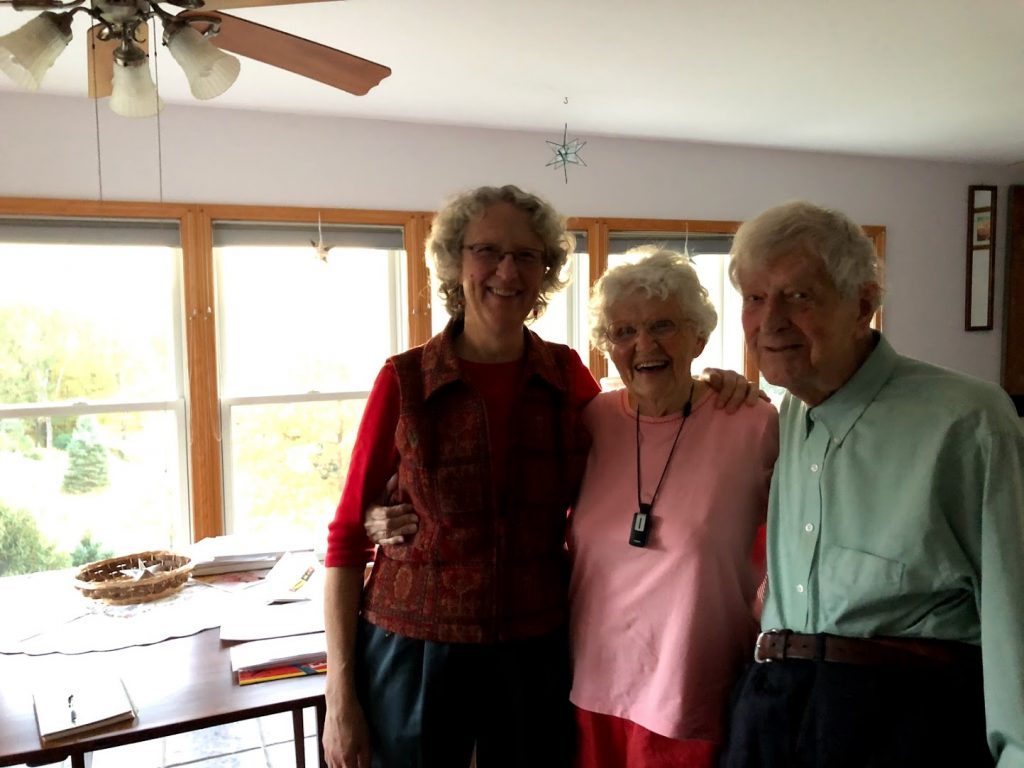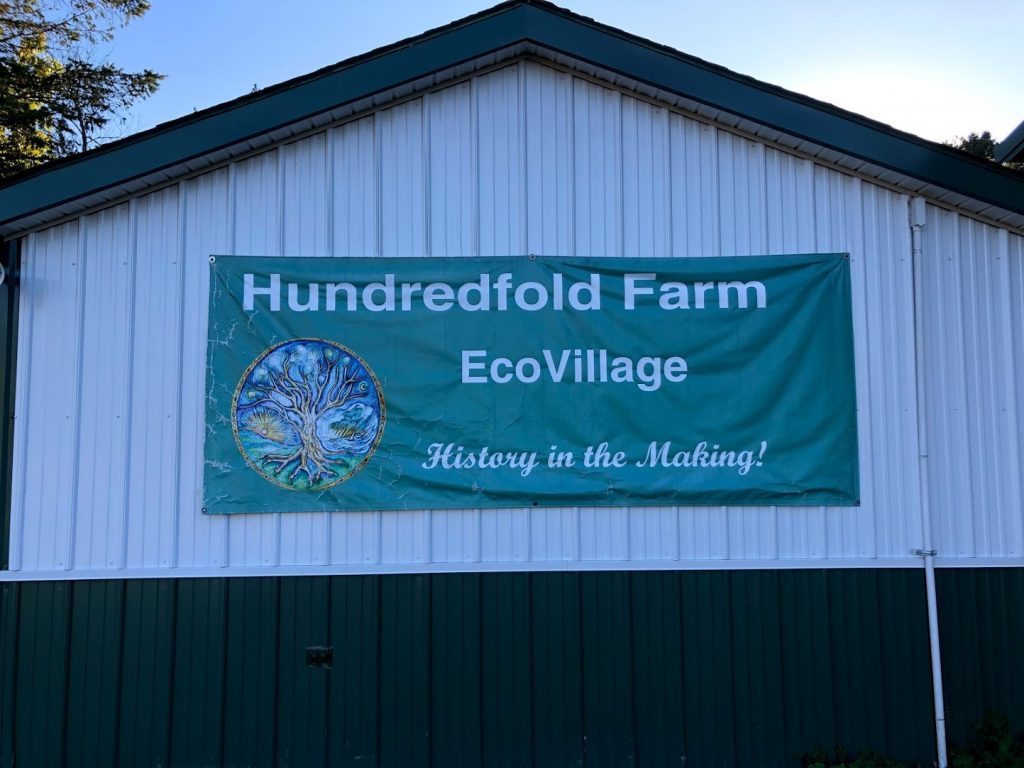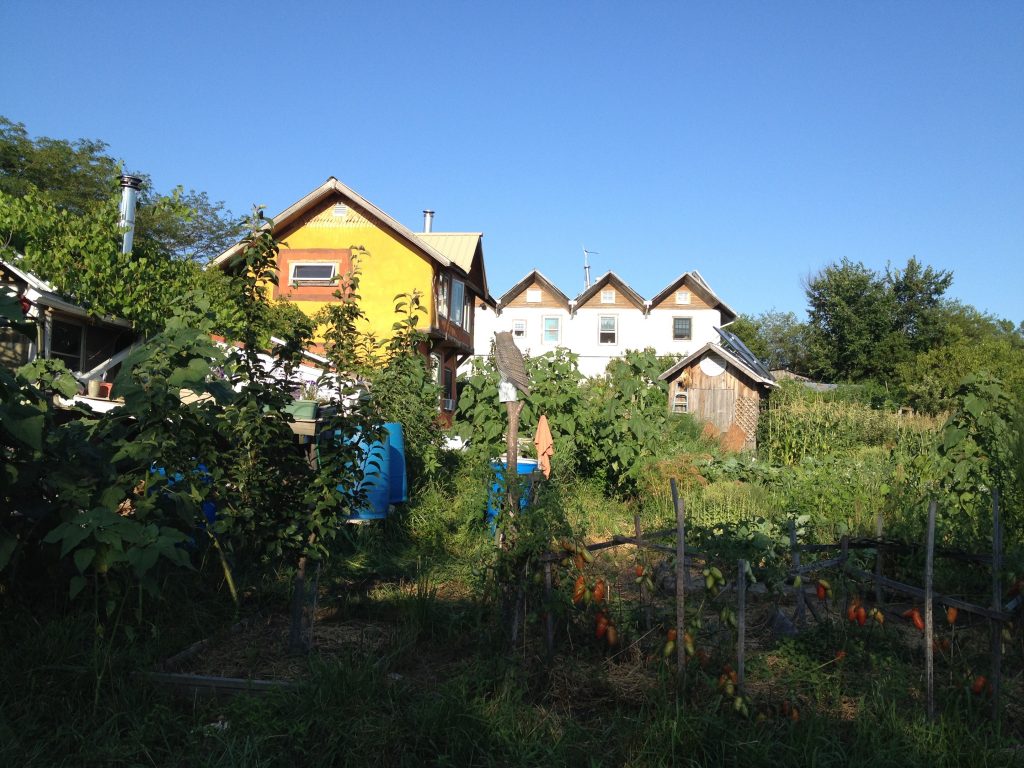Intentional Communities: Sustainable for You and the Environment
By Max Lulavy, November 6, 2019
Lou and Patricia Hammond have been married for over 50 years, building their relationship around establishing a sustainable community together called Hundredfold Farm, in 1995. Hundredfold Farm is a sustainability focused cohousing, located in the heart of the Appalachian Mountains near Gettysburg, Pennsylvania. Through Lou and Pat the benefits of living in an intentional community such as the one they’ve built become apparent, as they’re both happy and enjoying good health while living a more sustainable life than most.

Photo Credit: Max Lulavy, October 23, 2019
Climate change is a global threat to current and future generations alike, and has become an ever increasing and drastic issue that must be tackled in order to mitigate detrimental changes to the world. Conventional methods, combatting climate change, tend to be slow are as policy bogs down the processes of change. As such, it is crucial to become creative in our mitigation methods. One potential method is to take personal action and live in intentional communities with a sustainable focus. Intentional communities are small communities characterized by close relationships, shared common values, and can be found throughout the world in varying degrees of community integration. They aren’t a new idea either, Ebenezer Howard’s book, Garden Cities of To-morrow, argued for intentional communities in 1902, characterized by “a sense of community… and respect for nature.”
In the study, “Quality of Life in Intentional Communities,” an in depth statistical analysis of 1009 individuals from 280 intentional communities was done to investigate levels and predictors of wellbeing among inhabitants of intentional communities. One of the factors that is crucial to a successful community is identity fusion, which entails a “feeling of oneness with the group, and reflects a unique construct that differs from group identification, with the fused forming strong relational ties and deep bonds with other group members.” The study found that identity fusion scored a high 3.9, out of a 1-6 scale of wellbeing, concluding that community members are happier when they feel like a part of the group.
Lou and Pat’s daughter, Sandy, also lives in Hundredfold Farm and made an impromptu visit, agreeing to answer some questions. When asked if she feels like part of the community she replied, “I’m from a big family, so we’ve always been a tight family and we’ve always helped and worked with each other; and then, you go out into the world and it doesn’t do that anymore. So this (Hundredfold Farm) extends my family.”

To make Hundredfold Farm more sustainable Lou and Pat, with the help of their son-in-law, designed energy efficient houses, building the houses vertically into the south-facing sides of hills to obtain the natural insulation of the earth while capturing as much sunlight as possible with solar panels, located on their roof.
There are many other details about their sustainable houses that would go unnoticed to the untrained eye, such as the type of flooring, the placement of windows, and how they use the house. Lou states that for them to live sustainably they, “have to live with their house, not just in it.” For example, they open their blinds to keep the house cooler in the day, and close them to insulate heat in at night. Pat claims, “I’m convinced it’s the tiny things that add up, and it’s taken me years and years to train myself.” She now says that she can’t do anything without thinking about the energy she could be saving.
Video Credit: CBS 21 News of Harrisburg, PA
There are many intentional communities whose focus lies on sustainability, these are often called ecovillages. According to Matthew Daly, writing from the Institute for Sustainble Future in Sydney, Australia, ecovillages produce significantly less carbon than other neighborhood types and have a significantly less harmful ecological footprints. His study identified 23 communities and 30 footprint measures, collecting data from 2000-2014 to prove his hypothesis. All but three cases had about a 35 percent lower carbon footprint level than other non-sustainability oriented communities. The three outliers had a higher carbon footprint because of their rural location that requires large amounts of gas or diesel in transporting essential goods.
Sustainable intentional communities also reduce their carbon footprints by taking steps as a collective to reduce their car and electrical usage. They tend to use more reusable energy, such as wind and solar power, allowing them to remain off the greater electrical grid, which uses coal, natural gas, or other fossil fuels. Experts from the Ecology Communications Group claim, if we are to reduce our effects on climate change and reduce our carbon footprint it is essential to rely more heavily on renewable energy sources as many sustainable communities do.

Photo Credit: Ryo Chijiiwa
Another factor discussed by Daly is the ecological footprint of ecovillages. The average Ecological footprint was about 50 percent less than comparison figures; however, there is still great variability in these figures. Quayside Village Cohousing, located in Canada, had the highest ecological footprint, which was about 400 percent greater than the lowest ecological footprint in Earthaven Ecovillage in the US. The Dancing Rabbit Ecovillage in Missouri, describes that sustainable intentional communities tend to group their houses closer together to leave as much nature and green space as possible for wildlife and plant life to thrive, which serves as a great model to reduce their communities’ ecological footprint.
If we are to minimize our effects on climate change people must start turning to more sustainable living styles, such as intentional communities. This model of living is more sustainable, improves mental health, and is conducive to a less stressful life because the community is surrounded and based around nature. People should take communities like the Hundredfold Farm seriously as a way to combat climate change, through reduction of energy usage, and to live a healthier and happier life.
References:
Daly, M. 2017. Quantifying the environmental impact of ecovillages and co-housing communities: a systematic literature review. Institute for Sustainable Futures, University of Technology Sydney. Sydney, Australia.
Dancing Rabbit Ecovillage. Buildings at Dancing Rabbit. <https://www.dancingrabbit.org/about-dancing-rabbit-ecovillage/eco-living/building/> Accessed November 3, 2019
Grinde, B., B. R. Nes, I. F. MacDonald, and D. F. Wilson. 2017. Quality of Life in Intentional Communities. Social Indicators Research
Hammond, L., P. Hammond, and S. Hammond. October 23, 2019. In person by Max Lulavy and Jack Lueddeke
McLamb, E. September 6, 2011. Fossil Fuels vs. Renewable Energy Resources. <https://www.ecology.com/2011/09/06/fossil-fuels-renewable-energy-resources/> Accessed November 3, 2019
Wallbridge, Rebecca E. 2011. A Marcusian utopia?: the redefinition of need in Green intentional communities. University of Bristol, Great Britain, UK